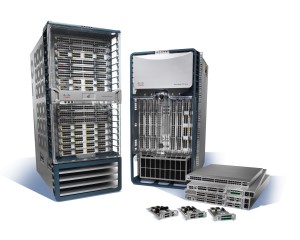 Overview
Overview
In the previous post on this subject, we discussed the changes from the “old” DCICN exam to the “new” 200-150. In this blog post, I lay out the exact exam topics you need to master in order to pass this exam.
The 200-150 Exam Topics
Here are the exam topics. Note that the percentage shown for each major topic domain indicates the number of questions in your exam that will come from that section! I also resisted the temptation to do a bunch of formatting for this blog post on this list of topics. This is so that you can easily copy and paste this list into the tracking software of your choice as you study.
1.0 Data Center Physical Infrastructure – 15%
1.1 Describe different types of cabling, uses, and limitations
1.2 Describe different types of transceivers, uses, and limitations
1.3 Identify physical components of a server and perform basic troubleshooting
1.4 Identify physical port roles
1.5 Describe power redundancy modes
2.0 Basic Data Center Networking Concepts – 23%
2.1 Compare and contrast the OSI and the TCP/IP models
2.2 Describe classic Ethernet fundamentals
2.2.a Forward
2.2.b Filter
2.2.c Flood
2.2.d MAC address table
2.3 Describe switching concepts and perform basic configuration
2.3.a STP
2.3.b 802.1q
2.3.c Port channels
2.3.d Neighbor discovery
2.3.d [i] CDP
2.3.d [ii] LLDP
2.3.e Storm control
3.0 Advanced Data Center Networking Concepts – 23%
3.1 Basic routing operations
3.1.a Explain and demonstrate IPv4/IPv6 addressing
3.1.b Compare and contrast static and dynamic routing
3.1.c Perform basic configuration of SVI/routed interfaces
3.2 Compare and contrast the First Hop Redundancy Protocols
3.2.a VRRP
3.2.b GLBP
3.2.c HSRP
3.3 Compare and contrast common data center network architectures
3.3.a 2 Tier
3.3.b 3 Tier
3.3.c Spine-leaf
3.4 Describe the use of access control lists to perform basic traffic filtering
3.5 Describe the basic concepts and components of authentication, authorization, and accounting
4.0 Basic Data Center Storage – 19%
4.1 Differentiate between file and block based storage protocols
4.2 Describe the roles of FC/FCoE port types
4.3 Describe the purpose of a VSAN
4.4 Describe the addressing model of block based storage protocols
4.4.a FC
4.4.b iSCSI
5.0 Advanced Data Center Storage – 20%
5.1 Describe FCoE concepts and operations
5.1.a Encapsulation
5.1.b DCB
5.1.c vFC
5.1.d Topologies
5.1.d [i] Single hop
5.1.d [ii] Multihop
5.1.d [iii] Dynamic
5.2 Describe Node Port Virtualization
5.3 Describe zone types and their uses
5.4 Verify the communication between the initiator and target
5.4.a FLOGI
5.4.b FCNS
5.4.c active zone set
